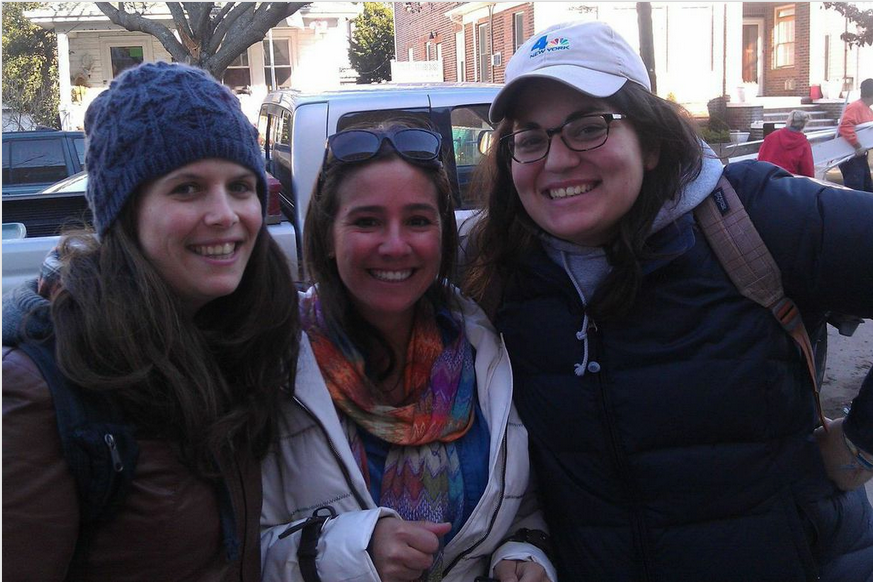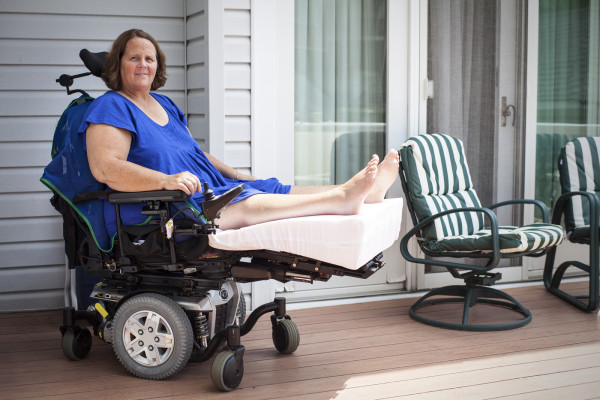Right after Sandy, I co-founded a storm relief page on Facebook with two women who, at the time, I didn’t know very well. The only thing that united us was the storm and the devastation our community faced.
Still, within hours, our page, Rockaway Emergency Plan, had ballooned to over ten thousand followers, and the three of us became almost accidentally committed to recovery in Rockaway. Our drive to help the town where we grew up was almost an intuitive, natural impulse.
And I wasn’t alone. Throughout the recovery I was amazed by the way regular citizens simply showed up to help, sometimes in dramatic ways and for extended time periods. I was also struck by the role social media played in facilitating the grassroots recovery movement.
At Rockaway Emergency Plan, we used Facebook to initiate and coordinate much of our work, as did many others. In the hours, weeks and months after the storm, volunteers in and near Rockaway worked with different social media platforms to disseminate information, ask for help, offer relief, and document progress towards recovery.
As a means of sharing information and telling stories, social media can accomplish what traditional media cannot. As a means of soliciting aid, social media is effective; as a means of helping communities become resilient, social media is essential. And all of this is connected, in direct and indirect ways, to compassion and love.
Let me begin with my story…..
The day before Sandy made landfall, I begged my parents to leave the peninsula, but my dad refused.
The previous year I made a big fuss, insisting everyone leave during Hurricane Irene, but nothing ended up happening. For Sandy, the news coverage seemed like fear-mongering for ratings.
But on Monday night, Sandy took a sharp turn towards New York City. When the power went out in Rockaway my sister called to tell me. A little while later, she called again, sounding scared, saying water had filled the entire basement of my childhood home and was beginning to pour in the front and back doors on the first floor.
“We’re moving to the second floor, but don’t worry,” she said.
A few minutes later, she called again.
“We’re on the second floor, but when we look out the window, the houses near ours are on fire,” she said. “If the fire comes here, we’re going to try to climb on top of the garage.”
Then the phone line cut out. All cell service in Rockaway was wiped out.
In the morning, the streets of Rockaway looked worse than anyone had expected or seen before. Dozens of homes along the ocean were demolished to rubble, completely unrecognizable, the land reclaimed by the sea. On other blocks, strips of property were burned to piles of ash from fires started by electrical transformers. Heaps of sand lined the streets. The black-top was invisible and driving a car was nearly impossible.
The mainstream news wasn’t providing the information we needed, focusing on sensational images, but neglecting to provide any practical information. So Rockaway-local Katie Honan and I started a Facebook group called Rockaway Emergency Plan. We invited every single friend we had and our page ballooned fast to over ten thousand people in just a couple of days.
We immediately started using Facebook to crowdsource information and ask for help. Sandy marked a turning point in the use of social media during disasters. For the first time in my life, Facebook was good for something besides ‘liking’ a picture of a cute puppy.
In the absence of governmental and traditional journalistic information, social media became an invaluable medium for mobilizing volunteers and communicating with the community on a hyperlocal level.
In the first hours, days and weeks after the storm I acted as a first responder. Rockaway needed help. We needed boots on the ground. When I put out a call for help on our Facebook page, I didn’t expect much. I wasn’t even sure people had the power or cell service to see our requests.
But the next day, St. Francis de Sales was inundated with hundreds of volunteers, all eager to muck out basements, make sandwiches, and check on the homebound.
I was a amazed by the power of the volunteer response. I had never seen anything like it. But when I spoke to Emiliana Simon-Thomas, the director at the Greater Good Science Center at the University of California, Berkeley. She said she wasn’t surprised to hear about the groups of spontaneous volunteers. She said social networks move people towards compassionate action in ways that mainstream media doesn’t.
“The thing that social networks do in an unprecedented way is facilitate immediate, real time multimedia communication between people - lots of people - at far distances.”
Emiliana said requests for help and images of disaster arrive within a community of people who sort of know each other, even if it is through many degrees of separation.
“People feel more connected to all of this input as opposed to seeing infomercials about despondent children in far away countries, which, since they're not associated with anyone the viewer knows either directly or by association, don't elicit the same kind of trust or identification with the victims.”
Emiliana explained that in addition to the draw of a connected network, altruistic action may be motivated by life comparisons.
“There's a strong tendency to compare oneself to the stories about people we see on social media, for better or for worse. In the case of suffering, like seeing people lose their homes to a typhoon, especially if those people are somehow connected to us, people tend to evaluate their own comfort and fortune.”
“From our warm, safe work chairs with little impending threat or concern, we may feel more inclined to contribute some of what is easily available to us to those who are in need, especially those who fall within our social network.”
Several weeks into the unofficial social media-driven volunteer operation, more traditional relief operations with infrastructure and experience arrived on scene. That’s when Rockaway Emergency Plan transitioned from recovery to rebuilding.
Using the same social network channels, we grew our efforts in a distinctly journalistic direction--one that valued in-depth data gathering, but also allowed for the communal voice of the people to to be heard and immediate needs to be met.
In the first weeks after the storm, we mostly functioned to provide immediate relief to their neighbors. But before long we recognized a necessary shift in the nature of our advocacy work. This shift marked an evolution from a crisis management collective to an open news resource.
While the need for local information and citizen engagement existed before the storm, it became even more necessary as the town tried to recover as a united community. Sandy left Rockaway feeling lonelier than ever, crippling already-fragile businesses, limiting the notoriously slow and inconsistent transportation, and draining the bank accounts of so many on the peninsula who didn't have much to begin with.
Immediately after the storm, residents were clamoring for unbiased information. The community needed specific, consistent and accurate hyperlocal information about itself. Rockaway needed information about rebuilding, but not inconsistent information voiced by interested outsiders, information that was homegrown and committed to the long-term reality of conscious, thoughtful rebuilding.
Pairing up with web developer Jessica Klein, we developed an integrated social media and web presence. Through these reinforcing channels, we started to highlight the steps towards recovery. We centralized information, which included curating a set of resources for residents, documenting countless meetings, and highlighting volunteer groups and events occurring on the peninsula. A few months after the storm, we organized a local hackathon as part of the National Day of Civic Hacking to try to build technology-based tools to help in future disasters.
Three years later I feel lucky to call Rockaway my hometown. I am so proud of the recovery of our resilient peninsula and the small part I played in helping that happen.

